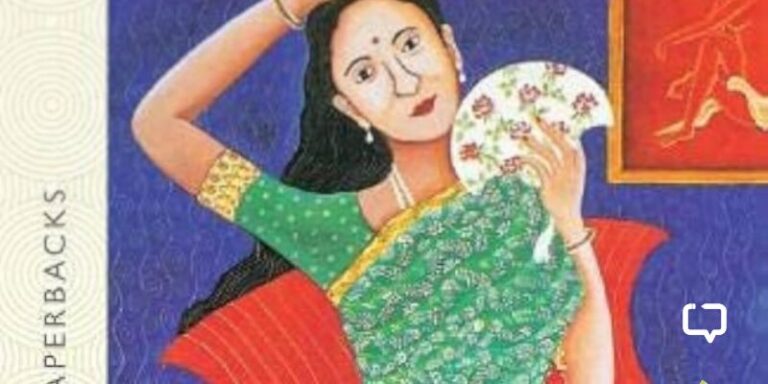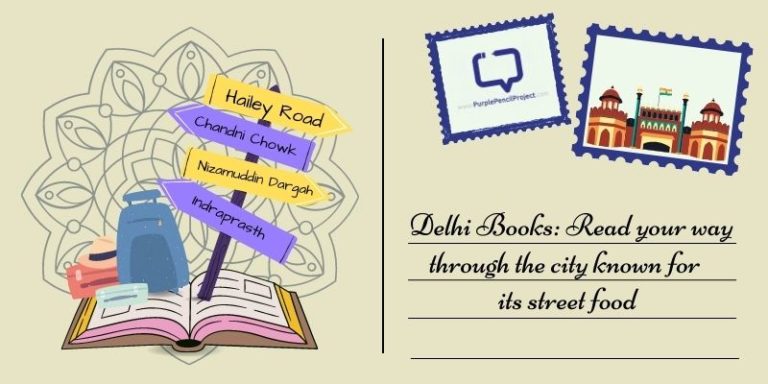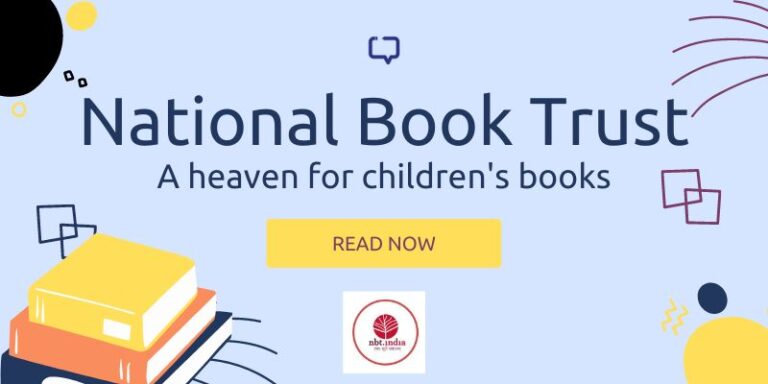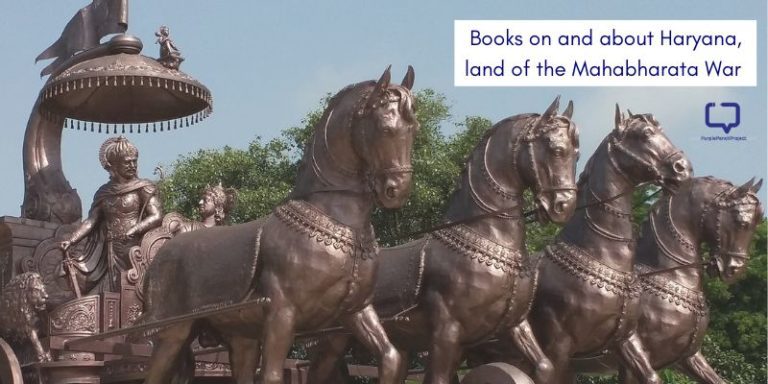We love books (duh!). They take us to new places, or at least give us fresh eyes to view the places we have been to. For, let us us face it, though we all might love the idea of travel, travelling as much as we want to is not always possible because life, family, work. Books, however, offer us a door into multiple places, settings and worlds that we might never be able to visit in real life.
Here is a list of a few such books that will take you in space and time to places in India that you might otherwise never see. We take you on a journey, city by city, town by town, place by place, picking up books that we think will immerse you in a first hand experience of the place as you read them.
Delhi
Delhi: A Novel by Khushwant Singh is a love letter to the city. Describing the sophistication as well as the squalor of Delhi with ease and conviction, reading this novel is like embarking on a journey of Delhi through the ages, as it rises and falls with the different rulers from time to time. Narrated by a journalist (a semi-autobiographical figure), the novel (which Khushwant Singh claims remained for quarter of a century in the making) is replete with historical references to the various dynasties and kings that ruled Delhi. Also recurring in its pages are the lines from various Urdu poets like Meer, Ghalib, Zafar, Zauq. The book moves from history to contemporary India and ends at the Hindu-Sikh riots. A magnum opus that runs for almost 400 pages, this novel will introduce you to the sights, sounds and smells of a Delhi that you cannot find in person.
I asked my soul: What is Delhi? She replied: The world is the body and Delhi is its life.” – Mirza Asadullah Khan Ghalib in Khushwant Singh’s Delhi
Mumbai
Midnight’s Children by Salman Rushdie: Although it begins in Kashmir, it is Mumbai that’s brought alive in this great novel by Salman Rushdie with painstaking clarity and great detail. Various places of the city like Reader’s Paradise bookshop, Rhythm House music shop and the Metro Cinema are mentioned, so that the books ends up being a tour of Mumbai itself. The novel, which blends history and fiction and makes use of the literary device of magic realism, is a delight to read. Also, this book was awarded not just the Booker Prize in 1981 but also the Booker of Bookers. Go ahead and pick this up to go on a exhilarating ride to not just a place but also to a time, of glorious Mumbai, where culture thrived and there was much to look at, more than bars and malls, where communities lived and made Mumbai, Bombay.
The Pioneer Cafe was not much when compared to the Gaylords and Kwalitys of the city’s more glamorous parts; a real rutputty joint, with painted boards proclaiming LOVELY LASSI and FUNTABULOUS FALOODA and BHEL_PURI BOMBAY FASHION, with film playback music blaring out from a cheap radio by the cash-till, a long, narrow, greeny room lit by flickering neon; a forbidden world in which broken-toothed men sat at reccine-covered tables with crumpled cards and expressionless eyes.
Narcopolis by Jeet Thayil: Narcopolis is another award-winning novel which presents Mumbai (or Bombay as it was), but from an addict’s perspective. Thayil is a well known poet and his first novel Narcopolis can also be seen as a poetry in prose. Narrated from the standpoint of an addict, this book presents before its readers a different aspect, a different side of Mumbai – one laden with filth, squalor and drugs. It begins in the 1970s and moves through the places and characters on the lowest rung of society till it ends in the year 2004, charting the differences that have come to define the city in these three decades. Pick this up, travel to the past and see the other side of the city for yourself.
I found Bombay and opium, the drug and the city the city of opium and the drug Bombay . . . I’m turning my head and inhaling, you do the rest . . . I’m not separating but connecting, I’m giving in to the lovely stories.
Calcutta
Calcutta – Two Years in a City by Amit Chaudhuri: Part memoir/part history, this book presents Calcutta (or Kolkata) as seen by the eyes of the novelist Amit Chaudhuri. While Kolkata often figures as a locale in his novels like A New World , A Strange and Sublime Address and Afternoon Raag; it is this work that presents Kolkata as he has experienced and understood it to be over the years. The city comes alive in the description of the places, the ways of life and the sights, smells and tastes it offers to the readers. The socio-political aspects of the city are also presented in a few chapters that add to the scope of the book. A blessing for an arm-chair traveller, this book will give you a peek into everything Calcutta right from the moment you open it.
Anyway, if Calcutta today suffers in comparison, it’s not really to other cities, but principally to itself and what it used to be. Anyone who has an idea of what Calcutta once was will find that vanished Calcutta the most insurmountable obstacle to understanding, or sympathising with, the city today.
The Sunderbans
The Hungry Tide by Amitav Ghosh: While we recommend you read all of Ghosh’s books, here is a place to begin if you haven’t already started. The Hungry Tide takes place on the breath-taking waterscape of the Sundarbans and brings to life the place, its people and their life. With no fresh-salt water boundaries, islands that appear and disappear according to tides, a rich fauna and flora, this is a waterscape that was declared a world heritage site and has the largest population of tigers. This archipelago is more than just a fascinating backdrop for the text. The place, its people, their beliefs, their history and their lifestyle are invariably linked to everything that happens in the book. And do not blame us if, after reading this book, the urge to visit them gets hold of you and you plan your next vacation accordingly!
But here, in this tide country, transformation is the rule of life: rivers stray from week to week, and islands are made and unmade in days. In other places forests take centuries, even millennia, to regenerate; but mangroves can recolonize a denuded island in ten to fifteen years. Could it be the very rhythms of the earth were quickened here so that they unfolded at an accelerated pace?
Goa
The Secret of the Sea – An Inspector Pinto Mystery by Tanya Pinto Dias: Written by a young Goan, this novel is, as the name suggests, a mystery. But this is also a book that takes you on tour of Goa and things “Goan” as we follow Inspector Pinto to solve the case. There are many Goan moments in this book and the reflection of a place that is more than just a few of its beaches and parties (because let’s be honest, that’s all we know of Goa even when we have been there). Sprinkled with anecdotes, contemporary and historical issues related to Goa and even a Goan recipe, this light, breezy book will take you to Goa (once again or for the first time), on a thrilling ride that you will enjoy like the place.
Dehradun and the hills
A Town Called Dehra by Ruskin Bond: There can be no doubt that Ruskin Bond is the James Bond of writing. Most of us have read his works, his short stories, sketches, memoirs at some point or the other. And there is no denying that no reader can leave untouched by his affinity with nature and the hills he lives in. Most works by this author are bound to have wonderful descriptions of the lush valleys, the green trees and the flowing rivers in the region, but A Town Called Dehra makes it to this list because it is the pen portrait of a town, its inhabitants and its life style as it used to be some time ago. Anybody who hails from any town will be able to find some quirks of her own town in this town called Dehra. It is as unique as it is universal, giving the reader a chance to know a town as it existed once upon a time and as it cannot be found anymore. This collection which contains fiction as well non-fiction and poetry is a song dedicated to a town where Bond has spent his life.
There was a wild flower, a weed, that grew all over Dehra and still does. We call it Blue Mint. It grows in ditches, in neglected gardens, anywhere there’s a bit of open land. it’s there nearly all the year round. I’ve always associated it with Dehra. The burgeoning human population has been unable to suppress it. this is one plant that will never go extinct. it refuses to go away. I have known it since i was a boy, and as long as it’s there i shall know that a part of me still lives in Dehra.
Kerala
The God of Small Things by Arundhati Roy: This Booker prize winning novel is a rich, evocative novel which, with its vivid descriptions of the locale and the socio-political environment of the times it is set in, keeps the reader hooked throughout. The story of the twins Rahel and Esthappen becomes inseparably intertwined with the land and its culture. Be it the nuance of language, references to the rubber plantations or the politico-cultural associations and social obligations and situations, The God of Small Things offers a glimpse of Kerala very successfully. Roy takes Aymanam, a place situated near Kottayam, and describes it in great details and faithfulness, recreating the scenes and places before her readers with her pen. Until you travel to Kerala and can see these sights for yourself, let Roy guide you to them in her book.
It [the river] had shrunk. And she had grown. …
Once it had had the power to evoke fear. To change lives. But now its teeth were drawn, its spirit spent. It was just a slow, sludging green ribbon lawn that ferried garbage to the sea. Bright plastic blew across its viscous, weedy surface like subtropical flying-flowers.
Ahmedabad
The Walled City by Esther David: The Walled City, published in 1997, marked the debut of Esther David. While primarily this novel is about the experiences and struggles of growing up as a member of the minority bene Israel Jew, this novel is also about the city and its lifestyle. Replete with the sights, sounds and smells of Ahmedabad, reading this book is like experiencing the city first-hand. Set in the past – from pre independence times to post independence – this book will reward you with the experience of being part of a city that is seeped in historical moments and the past.
They are cutting the trees and building a new Ahmedabad across the river. I can smell the dying fragrance of the mango blossoms. In the walled city, the houses and the pols – those narrow streets crowded with box like tenements – grow tall and dense like trees in a rain forest, and the blazing sun burns the white mosaic on the terraces.
Kodagu (Coorg)
Tiger Hills by Sarita Mandanna: Set in a coffee plantation estate in Kodagu (Coorg) of the nineteenth century, this is a multi generation saga and a love story through the ages. This novel is not only rich in its description of the lush hills, the greenery and the flora and fauna of the beautiful city of Coorg, but it is also replete with cultural and social details of the life of its inhabitants. The Western Ghats come alive in the poetic narration by Mandanna and Coorg is there before us in all its glory. Moving through history, beginning in nineteenth century and moving till the time of the independence struggle, Tiger Hills brings to life everything it touches – the hills, the forests, the clouds and the monsoons, the houses and the gardens. Visit Coorg through the ages and admire its matchless beauty as you lose yourself in the pages of this wonderful book.
Turning inland, the silver flash of the Kaveri river, ribboning the olivine mountains and parceling Coorg neatly in two like the halves of a coconut. To the north, the undulating hills of bamboo country, softly rounded, dotted with towering arches of bamboo and slender knots of trees. . . The Scotland of India. That was what many white folk in Coorg called it, this part of the land that reminded them so much of Europe.
Mizoram
Zorami – A Redemption Song by Malsawmi Jacob: Malsawmi Jacob’s novel Zorami is set in the Mizoram of the 1960s, a turbulent time, known as ‘ram buai’. It was a period of long famine and drought and insurgency. Zorami is the central character and through her and the novel we get a slice of the place, the culture and the everyday life of people in those tumultuous times. A sense of the history, culture, and folklore is effectively present in the book. And the state and its descriptions make one feel that they are experiencing it first hand. The writer uses simple to evacuate vivid images of the landscape as well as that of history, giving the reader an insight into the place. Folktales are also woven into the main story, adding another layer to the story. Read this book to know Mizorm and visit the place as it was at a point in history.
A blue-grey haze covered Aizawl town and the hills around. . .
Charred-black hillsides lay naked under the April sun, waiting for rain. As was the normal annual practice, the forests had been slashed and burned for cultivation.
Sunday morning church bells peeled. . . They rang out from all directions.





















